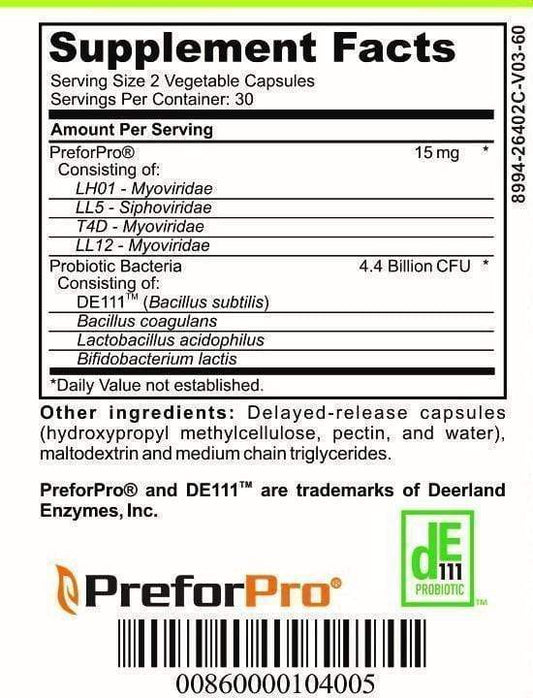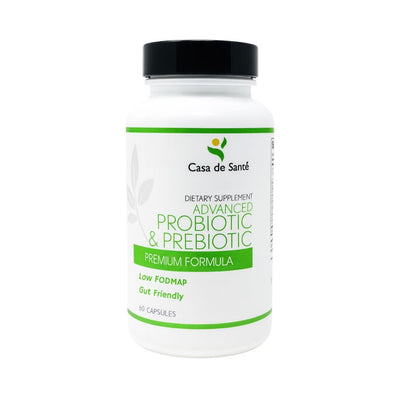Seafood Zoomer by Vibrant Wellness Vs T.R.U.E. Test (Thin-layer Rapid Use Epicutaneous Test)
Seafood Zoomer by Vibrant Wellness Vs T.R.U.E. Test (Thin-layer Rapid Use Epicutaneous Test)
Seafood allergies can be a challenging and sometimes life-threatening condition for those affected. In order to better understand and manage these allergies, various tests have been developed to identify specific allergens. Two such tests are Seafood Zoomer by Vibrant Wellness and T.R.U.E. Test (Thin-layer Rapid Use Epicutaneous Test). In this article, we will explore the science behind seafood allergies, the workings and benefits of Seafood Zoomer, the advantages of T.R.U.E. Test, and compare the two tests based on accuracy, ease of use, and cost. Additionally, we will delve into user experiences and case studies to provide a more comprehensive view of these testing methods.
Understanding Seafood Allergies
Seafood allergies are a result of the immune system's overreaction to proteins present in seafood. These proteins, known as allergens, can trigger a wide range of symptoms, from mild discomfort to severe anaphylaxis. Understanding the underlying science behind seafood allergies is crucial in developing effective testing methods and management strategies.
Seafood allergies are classified as immunoglobulin E (IgE)-mediated allergies. When a person with a seafood allergy consumes or comes into contact with seafood proteins, their immune system recognizes these proteins as harmful and produces IgE antibodies. These antibodies then attach themselves to mast cells and basophils in the body. Upon subsequent exposure to the allergen, the IgE antibodies trigger the release of various chemicals, such as histamine, leading to allergic symptoms.
Understanding the molecular composition and characteristics of different seafood allergens is essential in accurate testing and diagnosis. By identifying specific allergenic proteins, healthcare professionals can devise personalized treatment plans and help individuals avoid allergens.
Research has shown that seafood allergens can be heat-stable, meaning that they are not easily destroyed by cooking or processing. This poses a challenge for individuals with seafood allergies, as even trace amounts of allergens can cause severe reactions. Cross-contamination is a significant concern in restaurants and food processing facilities, where seafood and non-seafood items may come into contact with each other.
Furthermore, it is important to note that seafood allergies can develop at any age, even in individuals who have previously enjoyed seafood without any adverse reactions. This phenomenon, known as "acquired seafood allergy," occurs when the immune system undergoes changes that result in the development of new allergies. Therefore, individuals should remain vigilant and seek medical advice if they experience any unusual symptoms after consuming seafood.
Common Seafood Allergens
Several types of seafood contain allergenic proteins that are known to elicit allergic reactions in susceptible individuals. Common seafood allergens include:
- Finned fish (e.g., salmon, tuna, and cod)
- Shellfish (e.g., shrimp, lobster, and crab)
- Mollusks (e.g., clams, mussels, and oysters)
- Squid and octopus
- Scallops
These allergenic proteins may vary in their allergenicity and prevalence among different individuals, highlighting the importance of accurate testing.
Researchers have identified specific allergenic proteins in various seafood species, making it possible to develop diagnostic tests that can accurately detect and quantify the presence of these allergens. These tests, such as skin prick tests and blood tests, help healthcare professionals determine the severity of an individual's seafood allergy and guide appropriate management strategies.
In recent years, there have been advancements in the field of immunotherapy for seafood allergies. Immunotherapy involves exposing individuals to small, gradually increasing doses of the allergen to desensitize their immune system. This approach has shown promising results in reducing allergic reactions and improving the quality of life for individuals with seafood allergies.
It is important for individuals with seafood allergies to be aware of hidden sources of allergens. Some processed foods, such as fish sauces, imitation seafood products, and even certain medications, may contain seafood-derived ingredients that can trigger allergic reactions. Reading food labels carefully and seeking clarification from manufacturers can help individuals avoid accidental exposure to allergens.
In conclusion, seafood allergies are complex immune responses to specific proteins present in seafood. Understanding the science behind these allergies is crucial for accurate diagnosis, effective management, and the development of new treatment options. By staying informed and taking necessary precautions, individuals with seafood allergies can lead safe and fulfilling lives.
Introduction to Seafood Zoomer by Vibrant Wellness
Seafood Zoomer is an advanced testing method developed by Vibrant Wellness. This comprehensive test aims to identify specific seafood allergens and provide in-depth information to healthcare professionals and individuals with suspected seafood allergies.
Seafood allergies can range from mild to severe, and can cause a variety of symptoms such as itching, hives, swelling, difficulty breathing, and even anaphylaxis. Identifying the exact allergens responsible for these reactions is crucial in managing and treating seafood allergies effectively.
With Seafood Zoomer, Vibrant Wellness has revolutionized the way seafood allergies are diagnosed and managed. This innovative testing method goes beyond traditional allergy tests by offering a more comprehensive analysis of seafood allergens.
How Does Seafood Zoomer Work?
Seafood Zoomer utilizes innovative technologies to detect and quantify various seafood allergens in a patient's blood sample. By analyzing the presence and levels of specific allergenic proteins, this test can help identify the exact substances triggering allergic reactions, allowing for targeted management strategies.
The test begins by collecting a small blood sample from the patient. This sample is then sent to the Vibrant Wellness laboratory, where it undergoes a series of sophisticated analyses.
Seafood Zoomer utilizes an array of microbeads coated with purified seafood allergens. When the patient's blood sample is introduced to these beads, any specific IgE antibodies present in the sample will bind to their respective allergens. This binding reaction is then detected and quantified using specialized equipment, providing valuable insight into the patient's immune response to different seafood allergens.
The test results are meticulously analyzed by experienced laboratory technicians and presented in a detailed report. This report includes information on the specific seafood allergens detected, their levels in the patient's blood, and interpretation guidelines to help healthcare professionals understand the results and develop appropriate management strategies.
Benefits of Using Seafood Zoomer
Seafood Zoomer offers several benefits compared to traditional allergy testing methods:
- Comprehensive Analysis: Seafood Zoomer can detect a wide range of seafood allergens, providing a comprehensive overview of an individual's sensitivities. This allows healthcare professionals to have a more complete understanding of the patient's allergies and tailor their treatment accordingly.
- Personalized Approach: By identifying specific allergens, this test allows for personalized management strategies tailored to each individual's needs. This targeted approach can greatly improve the effectiveness of treatment and reduce the risk of accidental exposure to allergens.
- Efficiency: Seafood Zoomer delivers results quickly, allowing healthcare professionals to promptly develop treatment plans and recommendations. This efficiency is particularly important in cases where immediate dietary changes or avoidance measures are necessary to prevent allergic reactions.
Furthermore, the availability of detailed reports and interpretation guidelines provides a valuable resource for healthcare professionals and individuals seeking to understand their test results and manage their condition effectively.
It is important to note that Seafood Zoomer is a diagnostic tool and should always be interpreted by qualified healthcare professionals. The test results, along with a comprehensive medical history and clinical evaluation, help guide the diagnosis and management of seafood allergies.
With its advanced technology and comprehensive analysis, Seafood Zoomer by Vibrant Wellness is at the forefront of seafood allergy testing, providing healthcare professionals and individuals with the information they need to effectively manage and treat seafood allergies.
Introduction to T.R.U.E. Test (Thin-layer Rapid Use Epicutaneous Test)
The T.R.U.E. Test, also known as the Thin-layer Rapid Use Epicutaneous Test, is another testing method utilized for diagnosing seafood allergies. Developed by Allerderm, this test offers a different approach to seafood allergy testing, focusing on the skin's immune response.
The Science Behind T.R.U.E. Test
The T.R.U.E. Test works by applying a panel of allergenic substances, including seafood proteins, onto the patient's skin. These substances are encapsulated within individual chambers on an adhesive patch. Upon application, the patches are left on the patient's skin for a specified period. The skin's reaction is then assessed after removal of the patches, providing information about the patient's sensitivities.
Advantages of T.R.U.E. Test
The T.R.U.E. Test offers several advantages over other testing methods:
- Skin-Specific Responses: As a skin-based test, T.R.U.E. Test provides information about how the patient's skin reacts to specific allergens, offering insights into potential contact dermatitis or localized allergic responses.
- Simplicity: The T.R.U.E. Test is relatively straightforward, both in terms of administration and interpretation of results. Healthcare professionals can easily apply and assess the test, making it an accessible option.
- Quick Results: Results from the T.R.U.E. Test are typically obtained within a short timeframe, allowing for prompt diagnosis and management decisions.
Comparing Seafood Zoomer and T.R.U.E. Test
Both Seafood Zoomer and T.R.U.E. Test aim to provide valuable insights into seafood allergies, but they differ in their approaches and advantages. Let's compare them based on accuracy, ease of use, and cost to help individuals make informed decisions about which test may be more suitable for their needs.
Accuracy Comparison
Overall, both Seafood Zoomer and T.R.U.E. Test have demonstrated good accuracy in diagnosing seafood allergies. However, it is important to consider individual variations and the specific allergens being tested. A thorough discussion with a healthcare professional can help determine which test may be more appropriate based on personal circumstances.
Ease of Use Comparison
When it comes to ease of use, the T.R.U.E. Test offers simplicity and accessibility. The test itself is easy to administer and interpret, making it suitable for various healthcare settings. On the other hand, Seafood Zoomer requires laboratory analysis and specialized equipment, which may be less accessible in certain locations.
Cost Comparison
Cost is an important factor to consider when choosing a testing method. Seafood Zoomer, being a comprehensive laboratory-based test, tends to be more expensive compared to the T.R.U.E. Test. While the T.R.U.E. Test offers cost advantages, it is essential to discuss insurance coverage and potential out-of-pocket expenses with healthcare providers.
Case Studies and User Experiences
Real-life experiences and case studies provide valuable insights into both Seafood Zoomer and T.R.U.E. Test. Let's explore user experiences related to these testing methods.
Seafood Zoomer User Experiences
Many individuals who have undergone Seafood Zoomer testing have reported positive experiences. The comprehensive analysis provided by this test has allowed them to identify specific allergens triggering their symptoms. Consequently, they have been able to make informed dietary choices and avoid potential allergic reactions. Additionally, personalized management strategies based on Seafood Zoomer results have helped improve their overall quality of life.
T.R.U.E. Test User Experiences
Users of the T.R.U.E. Test have also shared positive feedback. The skin-specific nature of this test has helped identify allergens causing contact dermatitis or localized allergic reactions. With this information, individuals have been able to make necessary adjustments in their daily routines, such as avoiding specific skincare products or occupational hazards that may exacerbate their condition. The T.R.U.E. Test has proven to be a valuable tool in managing these unique allergic responses.
In conclusion, Seafood Zoomer by Vibrant Wellness and T.R.U.E. Test offer distinctive approaches to identifying and managing seafood allergies. Each test has its own advantages in terms of accuracy, ease of use, and cost. By considering individual needs and consulting healthcare professionals, individuals can make informed decisions about which test will best suit their requirements. With the right testing method, individuals can gain valuable insights into their seafood allergies, leading to personalized management strategies and ultimately a better quality of life.




























